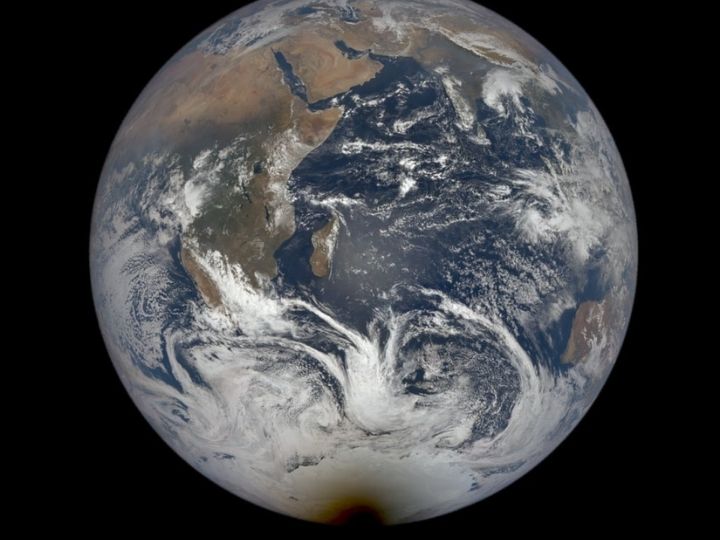New Delhi: Have you ever wondered how a solar eclipse is visible from space? NASA astronaut Kayla Barron clicked pictures of the December 4 total solar eclipse from inside the International Space Station (ISS). NASA has shared these pictures on its social media handle. In the image taken by Baron, the Russian section of the space station can be seen.
“Saturday morning, the Expedition 66 crew boarded the cupola to investigate the total solar eclipse that occurred in Antarctica and the Southern Ocean,” Kayla Barron said on Twitter. “Here the Moon casts an oblique shadow on the surface of the Earth. It was an incredible sight to behold.”
“Saturday morning, the Expedition 66 crew boarded the cupola to examine the total solar eclipse that occurred over Antarctica and the Southern Ocean. Here the Moon casts a rectangular shadow on Earth’s surface. It was an incredible sight to behold. ”
– Kayla Barrono pic.twitter.com/FktW8qsBIU
— NASA Astronauts (@NASA_Astronauts) 4 December 2021
The Cupola, located at the Earth-facing port of the Tranquility Module, is an ESA-built observatory module of the space station equipped with multiple windows, and designed for observation of astronomical events as well as operations outside the station. The Expedition 66 crew climbed into the cupola to enjoy a mesmerizing view of the total solar eclipse.
NASA also shared the view captured by the Deep Space Climate Observatory (DSCOVR) spacecraft, a space-weather monitoring spacecraft. It captured the shadow of the Moon while passing over Antarctica on December 4. The shadow is shaped like a cone extending out into space, whose circular cross-section is most easily seen during a solar eclipse. In the image, one can see a round, dark shadow over the continent. This happened when the Moon blocked the sunlight.

The space agency said on its website that the image of our home planet shows how Earth looked from more than 1.5 million kilometers away during a total solar eclipse in Antarctica, the only place where the total phase of the solar eclipse was observed.
The partial phase of the solar eclipse was visible in Australia, New Zealand, southern parts of Africa and South America, and the Pacific, Atlantic and Indian Oceans.
The solar eclipse peaked on December 4 at around 2:44 am EST (1:14 pm IST). The totality phase lasted two minutes, and during that period, the entire solar disk was shielded by the Moon. After this a small fragment of the Sun reappeared.
A total solar eclipse occurs when the new moon (the position of the Moon in which the Sun and Earth are on its opposite sides) comes between the Sun and the Earth, and casts the darkest part of its shadow on Earth, called the umbra. .
During a total solar eclipse, the Moon covers the entire disk of the Sun. A total solar eclipse is visible only in those areas of the globe that lie in the path of the Moon’s umbra.
,